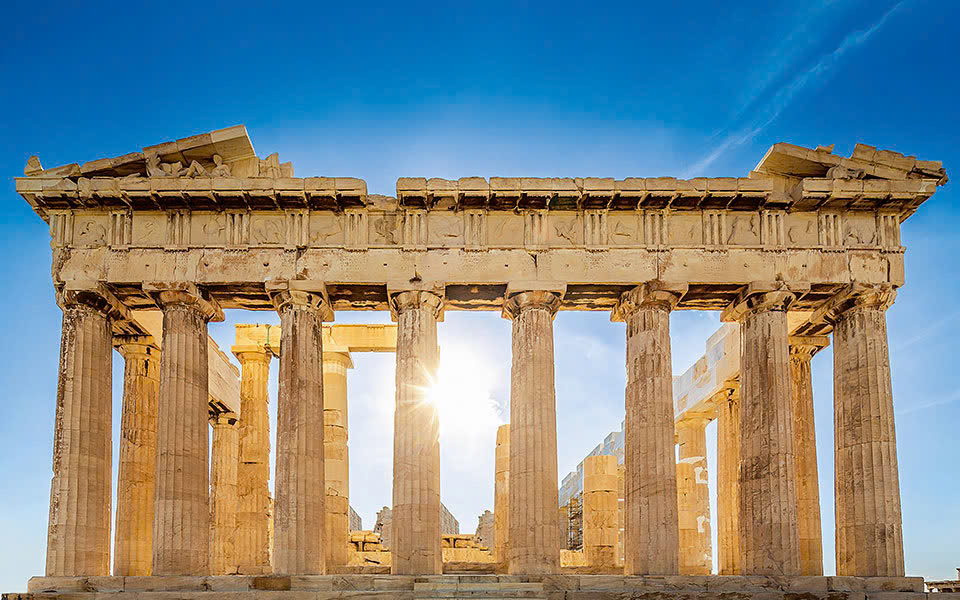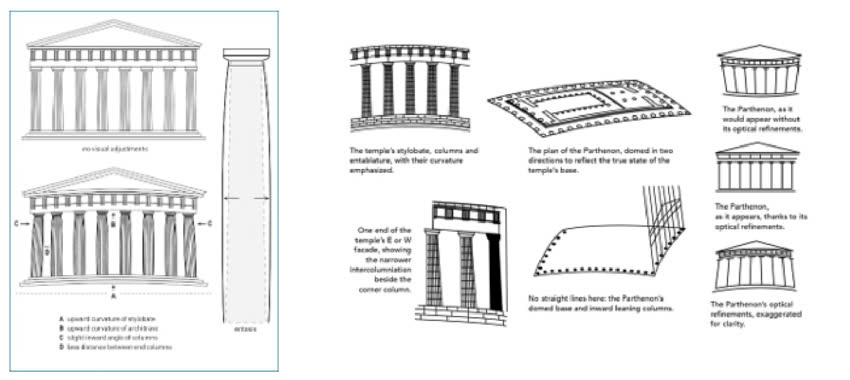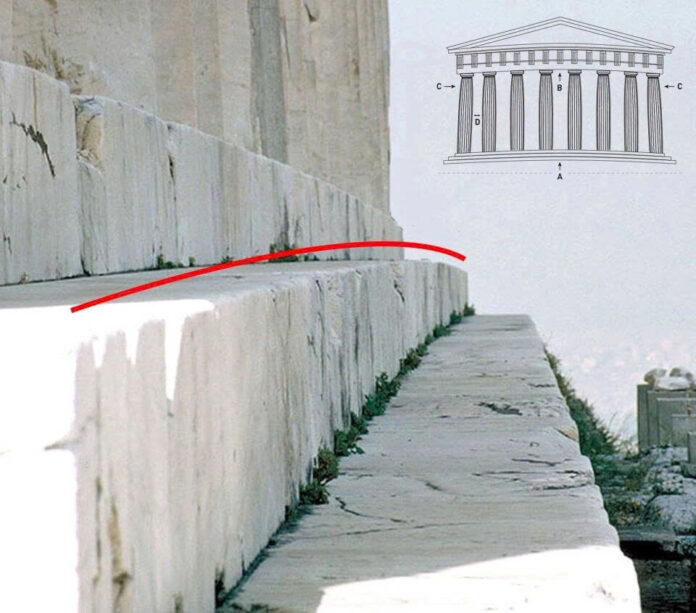The Parthenon stands as one of humanity’s greatest architectural achievements, not just for its historical significance but for its subtle visual wizardry. Standing atop Athens’ Acropolis for nearly 2,500 years, this temple dedicated to Athena appears to embody perfect geometric precision. Yet what visitors don’t realize is that almost nothing about this masterpiece is actually straight or perfectly aligned. Instead, its brilliance lies in a series of carefully calculated optical illusions designed to make an imperfect structure appear flawless to the human eye.
The Art of Visual Deception in Ancient Greece
The ancient Greek architects, led by Ictinus and Callicrates under the supervision of the sculptor Phidias, possessed an extraordinary understanding of human visual perception. They recognized that truly straight lines would paradoxically appear curved when viewed from a distance, and implemented ingenious solutions to counter these natural optical distortions.
The Rising Foundation: The Curved Stylobate
The foundation upon which the Parthenon sits, known as the stylobate, features a gentle upward curve rising approximately 2.6 inches at the center of the shorter sides and 4.3 inches along the longer sides. This seemingly minor adjustment serves a critical purpose: a perfectly flat platform would create the optical illusion of sagging in the middle when viewed from a distance. The subtle dome-like shape ensures the base appears perfectly straight to observers.
The Swelling Columns: Entasis at Work

Look closely at the Parthenon’s majestic Doric columns and you’ll discover they aren’t cylindrical as they first appear. Each column incorporates a slight bulge (entasis) around its middle section. This calculated distortion counteracts the visual effect that would make perfectly straight columns appear concave or pinched in the middle, thus maintaining an impression of structural integrity and visual harmony.
The Converging Columns: A Unified Structure

Perhaps most surprising is that none of the Parthenon’s columns stand perfectly vertical. Instead, all subtly lean inward toward the center of the temple. Mathematical projections suggest these columns would converge at a point approximately 1.5 miles above the structure if extended upward. This deliberate inward inclination prevents another optical illusion where perfectly vertical columns would appear to bow outward, threatening the visual stability of the edifice.
The Corner Solution: Thicker Edge Columns
The architects recognized that columns standing at the corners, silhouetted against the bright Athenian sky, would appear thinner than their neighbors. Their solution? Make these corner columns slightly thicker and position them closer to adjacent columns. This brilliant adjustment ensures visual consistency throughout the colonnade, with no column appearing disproportionately slender.
Video
The Balanced Entablature: Curves Above
The horizontal structure supported by the columns—the entablature—continues the pattern of intentional distortion with its own upward curvature, mirroring the stylobate below. This harmonious echo of curves prevents any appearance of sagging in the upper elements and contributes to the temple’s overall sense of perfect balance and proportion.
The Legacy of Architectural Illusion

These painstaking refinements reveal the profound sophistication of ancient Greek architectural knowledge. The Parthenon’s designers went far beyond mere construction, demonstrating an intimate understanding of human perception and aesthetic principles. Their work transcended pure mathematical precision in favor of perceptual harmony, creating a structure that appears more perfect than perfect geometry itself would allow.
What makes these optical corrections truly remarkable is their subtlety—they work so effectively that most visitors never consciously notice them. Instead, they experience only the resulting harmony, an inexplicable sense that this structure somehow achieves a visual perfection that other buildings lack.
The Parthenon thus stands not just as a monument to ancient Greek civilization but as testimony to humanity’s enduring pursuit of aesthetic excellence through the clever manipulation of visual perception—a masterpiece of architectural psychology that continues to captivate and inspire nearly twenty-five centuries after its creation.

